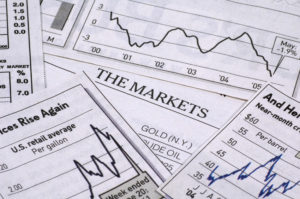A massive amount of automated trading helped cause recent turmoil in the market.
When the Fed began to reverse QE and started QT (tightening), it began to reverse its short volatility position in the bond market, which also affects stock market volatility.
Record inflows into stocks
January, typically a strong month because of the long term tendency for pension funds and institutional money to enter the market. This year was no different, as equity funds enjoyed their biggest monthly inflows on record, attracting about $102.6 billion in January. This caused the stock market to post its best January returns since 1987.
Computers and leverage
The recent decline was driven by computers trading with other computers on high amounts of leverage. High frequency trading (HFT) routinely surpasses 50% of volume on most stock exchanges, and it may have made up more than 50% of recent volume. The 1987 market crash was blamed on “portfolio insurance,” a form of computerized trading in which the lower the stock market went, the more the computer programs sold, creating a quick avalanche effect. Some of the recent moves felt like small avalanches.
The effect of (short) volatility ETFs especially ETPs
The Energy Transfer Partners (ETPs) space is over $3 trillion. As that space has grown, so has the use of computerized trading that helps manage ETP securities. Suffice it to say stock market volatility explosions caused those ETPs to reverse their short VIX futures positions, causing a record surge in VIX futures buy orders after-hours, when such ETPs typically square their positions.
On the day the Dow Jones Industrial Average declined 1,175 points, a surge in VIX futures buy orders created a surge in S&P futures sell orders as they are inversely correlated. Because of the record buying of VIX futures, their prices rose quickly after-hours, which caused many ETPs whose portfolios are short VIX futures to suffer record 80% declines after-hours, in effect blowing up their portfolios.
While most of the assets in short-volatility ETFs have already been liquidated over the week ending Feb. 9, there are still over $3 trillion in assets in all ETPs, so, sorry to say that further downside is still lurking in the stock market. It looks like the regulators allowed a monster to grow in the face of the ETP industry and they will have a very difficult time reining it in.
While this latest avalanche effect may have been triggered by the air pocket of inflows in stocks in February catalyzed by spiking long-term interest rates and imploding short-volatility ETPs, there is likely to be more volatility for the rest of 2018. The Fed is slated to keep reversing its own “short volatility” position in the bond market by intensifying QT operations, so the roller coaster we experienced in January and February may repeat – more than once. (Source: MarketWatch, Feb. 14, 2018)


